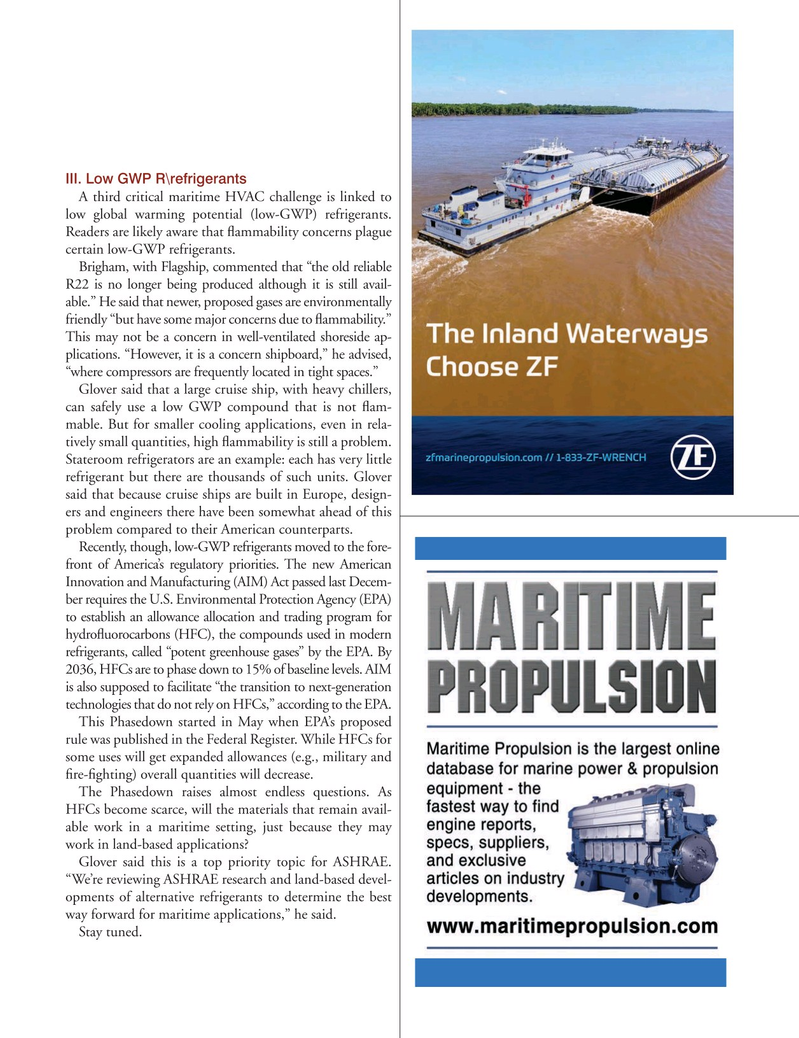
Page 35: of Marine News Magazine (September 2021)
Shipbuilding & Repair
Read this page in Pdf, Flash or Html5 edition of September 2021 Marine News Magazine
III. Low GWP R\refrigerants
A third critical maritime HVAC challenge is linked to low global warming potential (low-GWP) refrigerants.
Readers are likely aware that ? ammability concerns plague certain low-GWP refrigerants.
Brigham, with Flagship, commented that “the old reliable
R22 is no longer being produced although it is still avail- able.” He said that newer, proposed gases are environmentally friendly “but have some major concerns due to ? ammability.”
This may not be a concern in well-ventilated shoreside ap- plications. “However, it is a concern shipboard,” he advised, “where compressors are frequently located in tight spaces.”
Glover said that a large cruise ship, with heavy chillers, can safely use a low GWP compound that is not ? am- mable. But for smaller cooling applications, even in rela- tively small quantities, high ? ammability is still a problem.
Stateroom refrigerators are an example: each has very little refrigerant but there are thousands of such units. Glover said that because cruise ships are built in Europe, design- ers and engineers there have been somewhat ahead of this problem compared to their American counterparts.
Recently, though, low-GWP refrigerants moved to the fore- front of America’s regulatory priorities. The new American
Innovation and Manufacturing (AIM) Act passed last Decem- ber requires the U.S. Environmental Protection Agency (EPA) to establish an allowance allocation and trading program for hydro? uorocarbons (HFC), the compounds used in modern refrigerants, called “potent greenhouse gases” by the EPA. By 2036, HFCs are to phase down to 15% of baseline levels. AIM is also supposed to facilitate “the transition to next-generation technologies that do not rely on HFCs,” according to the EPA.
This Phasedown started in May when EPA’s proposed rule was published in the Federal Register. While HFCs for some uses will get expanded allowances (e.g., military and ? re-? ghting) overall quantities will decrease.
The Phasedown raises almost endless questions. As
HFCs become scarce, will the materials that remain avail- able work in a maritime setting, just because they may work in land-based applications?
Glover said this is a top priority topic for ASHRAE. “We’re reviewing ASHRAE research and land-based devel- opments of alternative refrigerants to determine the best way forward for maritime applications,” he said.
Stay tuned.

 34
34

 36
36
